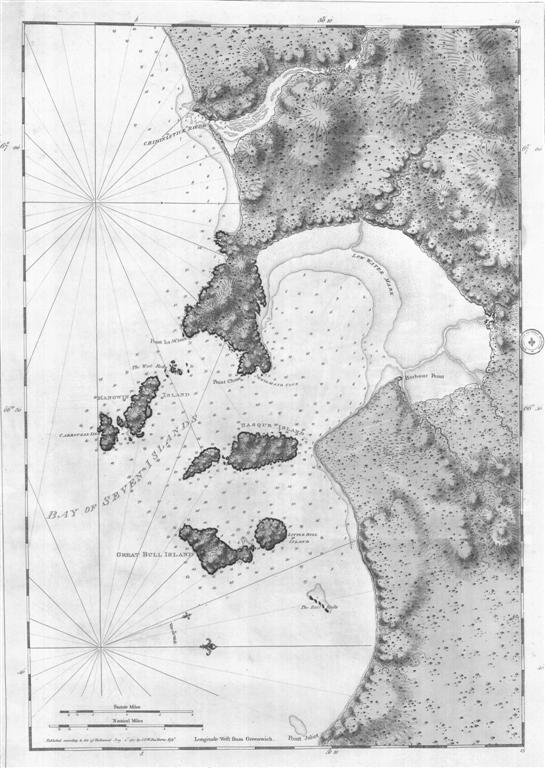

 |
 |
The layered mafic intrusion at Sept Iles, Canada, is one of the largest intrusions in the world. A new interpretation of its structure is proposed, based on a review of its geology and a comparison with the Skaergaard intrusion, Greenland. Several different magmatic components are recognized; hence the name Sept Iles Intrusive suite (SIIS) is proposed. Emplacement of the suite may have been preceded by eruption of flood basalts. The first magmas of the suite rose in the crust to accumulate beneath the density filter afforded by the basalts. The largest component is the Sept Iles Mafic intrusion (SIMI). The Lower series of the SIMI is dominated by leucotroctolites and leucogabbros. Above it lie the Layered series, which is largely comprised of gabbro and troctolite. Both these units are unchanged from earlier interpretations. The anorthosites (s.l.), gabbros and monzogabbros, formerly called the Transitional series, are now considered to be the Upper Border series, developed by floatation of plagioclase. Common autoliths in the Layered series are parts of the hydrothermally altered Upper Border series from towards the interior of the intrusion, which have foundered and settled through the magma. The contamination of the magma that accompanied this event oxidised iron in the magma and led to the precipitation of magnetite around the periphery of the intrusion. The subsequent depletion of Fe3+ and/or increase in SiO2, CaO and P2O5 may have induced apatite saturation and accumulation to form two layers rich in apatite, near the base and at top of the Layered series. Granitic magma was developed by fractional crystallisation and was emplaced along the roof of the chamber, where it acquired large quantities of xenoliths. These were probably derived from the flood basalts, their evolved members and fragments of mafic dykes chilled by the granitic magma. Accumulations of monzonite pillows in this unit testify to another magmatic event and a floor to the granitic magma chamber, indicating lateral transport of magma. Chemically distinct syenites in the upper part of the intrusion are part of the Point du Criade intrusion, a large, late composite sill. Diabase and leucogabbro components show a close link with the SIMI and all the acidic magmas may have originally formed by differentiation of the main magma in cupolas towards the centre of the intrusion. A series of late gabbro intrusions that cut the SIMI may represent a rejuvenation of magmatism. The Border zone is a mass of fine-grained rocks that occurs along the border of the SIMI: it may be another magmatic component, or just the lateral border series of the SIMI.
Higgins, M.D., 2005, A new model for the structure of the Sept Iles Intrusive suite, Canada. Lithos, 83: 199-213.
Zoom to Sept Iles with Google Earth
Higgins, M. D. & Doig, R. (1977). 540 Myr-old anorthosite complex in the Grenville province of Quebec, Canada. Nature 267, 40-41.
Higgins, M. D. & Doig, R. (1981). The Sept Iles anorthosite complex: Field relationships, geochronology and petrology. Canadian Journal of Earth Sciences 18, 561-573.
Higgins, M. D. & Doig, R. (1986). Geochemical constraints on the processes that were active in the Sept Iles complex. Canadian Journal of Earth Sciences 23, 670-681.
Higgins, M. D. (1990). A three-component composite dyke and its associated intrusion, Pointe du Criard, Quebec, Canada. In: Parker, A. J., Rickwood, P. C. & Tucker, D. H. (eds.) Mafic dykes and emplacement mechanisms: Balkema, Rotterdam, 63-68.
Higgins, M. D. (1991). The origin of laminated and massive anorthosite, Sept Iles intrusion, Quebec, Canada. Contributions to Mineralogy and Petrology 106, 340-354.
Higgins, M. D. & van Breemen, O. (1998). The Age of the Sept Iles Layered Mafic Intrusion, Canada: Implications for the Late Neoproterozoic / Cambrian History of Southeastern Canada. Journal of Geology 106, 421-431.
Cimon J (1998) Le Complexe de Sept-Îles: I - L'Unité à apatite de Rivière des Rapides, Complexe de Sept-Îles; localisation stratigraphique et facteurs à l'origine de sa formation. In, vol. Ministère de l'Énergie et des Ressources du Québec, pp 3-32
Dion D-J, Authier K, Cimon J, Feininger T (1998) Le complexe de Sept-Îles: II - Interpretation gravimétrique du complexe mafique stratifié de Sept-Îles. In, vol. Ministère de l'Énergie et des Ressources du Québec, pp 33-41
Higgins, M. D. (2005). A new model for the structure of the Sept Iles Intrusive suite, Canada. Lithos 83, 199-213.
Namur, O., Charlier, B., Toplis, M. J., Higgins, M. D., Liégeois, J.-P. and Auwera, J. V. 2010. Differentiation Processes in the Ferrobasaltic Sept Iles Layered Intrusion, Canada. Journal of Petrology. doi:10.1093/petrology/egq016
Namur O, Charlier B, Toplis MJ, Higgins MD, Hounsell V, Liégeois J-P, Vander Auwera J (2011) Differentiation of Tholeiitic Basalt to A-Type Granite in the Sept Iles Layered Intrusion, Canada. Journal of Petrology 52:487-539 doi:10.1093/petrology/egq088
Namur O, Charlier B, Holness MB (2012) Dual origin of Fe-Ti-P gabbros by immiscibility and fractional crystallization of evolved tholeiitic basalts in the Sept Iles layered intrusion. Lithos 154:100-114 doi:10.1016/j.lithos.2012.06.034
Namur O, Higgins MD, Vander Auwera J (2015) The Sept Iles Intrusive Suite, Quebec, Canada. In: Charlier B, Namur O, Tegner C, Latypov R (eds) Layered intrusions, vol. Springer, pp 465-516
Bolle O, Diot H, Fransen W, Higgins MD
(2021) Central sagging of a giant mafic intrusion: the Ediacaran Sept Îles
Layered Intrusion (Québec, Canada). Journal of the Geological Society
178(1):2020-2029 doi:10.1144/jgs2020-029
Paleomagnetic work abstracts (no
paper came out)
J L Kirschvink M Higgins D A D Evans T D Raub K Farle On the paleoposition of North America in mid-Vendian through Cambrian time: A Restudy of the Sept Îles and Pointe du Criarde Intrusive Suites, Quebec, Canada. y Chapman Conference on Timescales of the Geomagnetic Field
J L Kirschvink, M D Higgins, D A Evans, D J Condon, T D Raub, S A Bowring, G S Nowlan, F A Macdonald, K A Farley 2005 Ediacaran Rapid True Polar Wander: Constraints on a Possible Driving Mechanism From the Paleomagnetism and Geochronology of the Sept-Îles Intrusive Suite, Quebéc, Canada AGU Joint Session